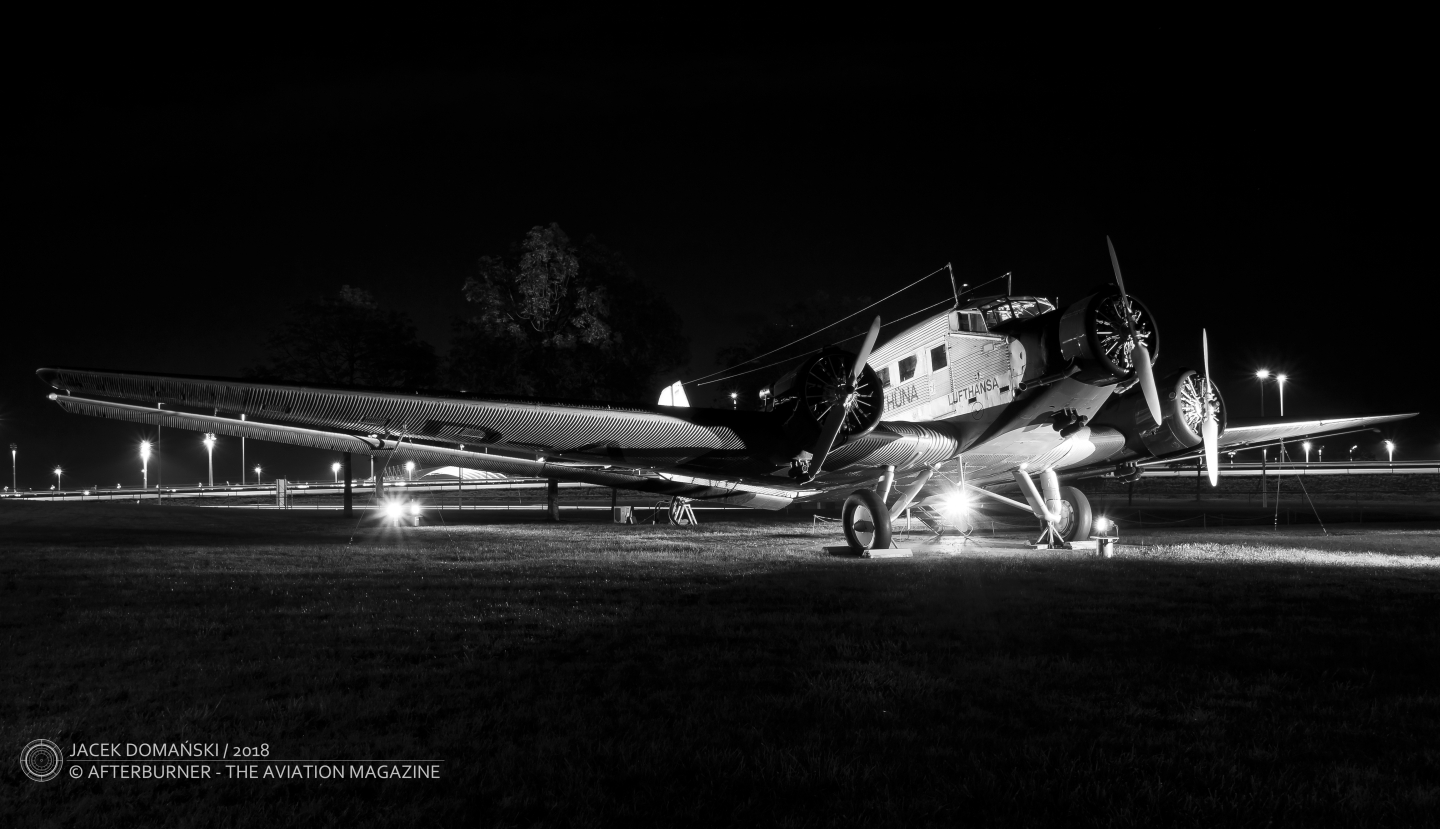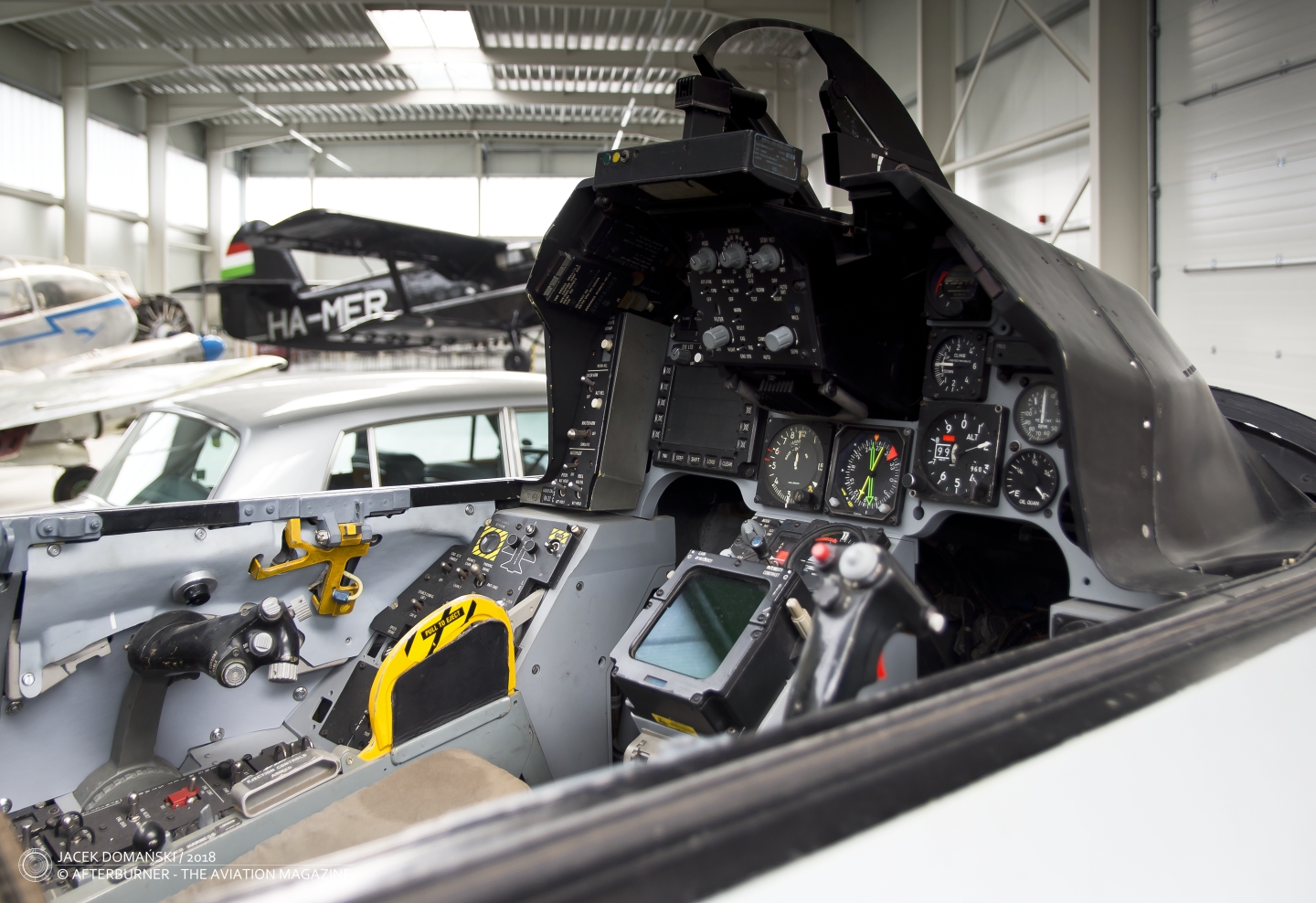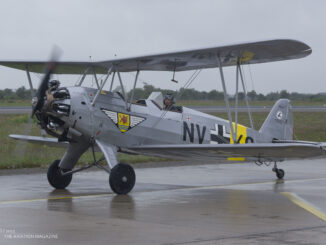
Junkers Ju 52/3mte ´Rudolf von Thüna´ replica, exhibited in the Munich Airport Visitor Park, made by re-painting the CASA 352L aircraft, a Spanish version of Ju 52, manufactured between 1945 and 1952.
The CASA 352L that could be found in Munich, was produced in 1947 (or 1949, depending on the source) and since 1949 served in the Spanish Air Force, 401ª Escuadrilla Mixta en Guinea. Withdrawn from the active service in 1971, the aeroplane was acquired by the German company Kurfiss Aviation, registered as D-CIAS and used until 1974 for the sightseeing flights.
Afterwards, this aircraft was exhibited in the Frankfurt Airport area from 1974 until 1994, being a part of the Air Classic Exhibition. When the exhibition was closed in 1994, this CASA 352L changed its owners a few times, finally finding the final destination in Munich, at the Airport Visitor Park (Besucherpark am Flughafen München). At the beginning, the aircraft was carrying the D-CIAS registration, used in 1970s for the sightseeing flights, but in 2004 the livery was changed for D-ANOY ´Rudolf von Thüna´ commemorating the pioneering flight to China in 1937.
The main difference between the original D-ANOY Ju 52 and the aeroplane exhibited in Munich, that could be easily spotted, are the engines – the CASA 352L was powered by the Spanish-manufactured ENMA Beta B-4.
And to explain why exactly the D-ANOY livery was chosen, one of the German aviation pioneers – Carl August Freiherr von Gablenz – must be introduced first.
Von Gablenz started his aviation career during the Great War years, at first flying as an observer, then becoming the pilot and at the end of the war flying as squadron adjutant of the Bombengeschwader der Obersten Heeresleitung Nr. 7.
After the war, von Gablenz initially worked as a pilot for Deutschen Luft-Reederei (later known as Aero Lloyd AG) and later for the Junkers Luftverkehr AG. In 1926 both abovementioned companies were forced by the government to merge and the new national carrier was established, the Deutsche Luft Hansa – von Gablenz became the first flight operations manager of the new company and, being one of the instrument flight pioneers, he was one of the creators of the Nachtpoststreckennetz – the European night-mail network of Lufthansa.
In 1933 von Gablenz was appointed to the board of management of the Deutsche Lufthansa. During the next years he worked on expanding the Lufthansa route network, focusing on the transatlantic flights and the Far East, still being active as a pilot – carrying the reconnaissance flights over North and South Atlantic or transferring himself a Junkers Ju 52 from Berlin to Shanghai, China, for the newly founded Eurasia Aviation Corporation. He was also the captain of the crew on the first regular flight from Europe to New York in 1936.
One year later, von Gablenz together with Flugkapitän Robert Untucht and Oberfunkermaschinist Karl Kirchhoff took-off from Berlin in the specially prepared Ju 52 D-ANOY with the goal to open the new route from Germany to China, avoiding the Soviet Union territory. The Ju 52 flew from Berlin to Yarkand and then Si-an (Xian), via Damascus, Teheran and Kabul, crossing the Hindu Kush and Pamir mountains.
This spectacular flight over the mountain peaks exceeding 5,300 metres of elevation and crossing of the Wakhan Corridor was von Gablenz´s another pioneering achievement. It was the very first time the aeroplane crossed the Pamir mountains. The crew successfully reached China and returned home, albeit not without some problems – due to the engine failure D-ANOY had to land in Hotan (Chinese Turkestan) and the crew was held for four weeks by the local warlords.
After his return, von Gablenz written the book about this adventure and pioneer flight – ´D-ANOY bezwingt den Pamir´ (D-ANOY conquers the Pamir), the book was re-printed in 2013 and sometimes could be found in German second-hand bookstores.
On Friday, 2nd December 1938, Junkers Ju 52 D-ANOY took-off from Berlin for the scheduled flight to Damascus, via Vienna, Athens and Rhodes. In the early morning hours, after the missed approach to Vienna Aspern airport, ´Rudolf von Thüna´ hit the Leopoldsberg hill and burst into flames. Fortunately, the four crew members and four passengers were only injured – which caused the accident was called ´das Weihnachtswunder´ (the Christmas miracle). However, the aircraft was damaged beyond repair and was written off.
Carl August Freiherr von Gablenz died on 21st August 1942, when his French-manufactured Siebel Si 204 crashed at Mühlberg on the Elbe. The circumstances behind the accident remain unexplained. At the moment of his death, von Gablenz was working as Chef des Luftwaffenplanungsamtes (the Chief of the Air Force Planning Office), being the first reserve officer promoted to the rank of General.
The remains of Junkers Ju 52 D-ANOY are exhibited in the Militärluftfahrtmuseum Zeltweg, Austria.
Sources:
- Die letzten Junkers Flugzeuge II: Junkers Ju52, AAC.1 und CASA 352; Paul Zöller
- D-Anoy Bezwingt Den Pamir; Carl August von Gablenz
- Der Karakorum Highway und das Hunzatal, 1998: Geschichte, Kultur und Erlebnisse; Horst H. Geerken, Annette Bräker
- Interessengemeinschaft Luftfahrt Fischamend web site
- Munich Airport web site



